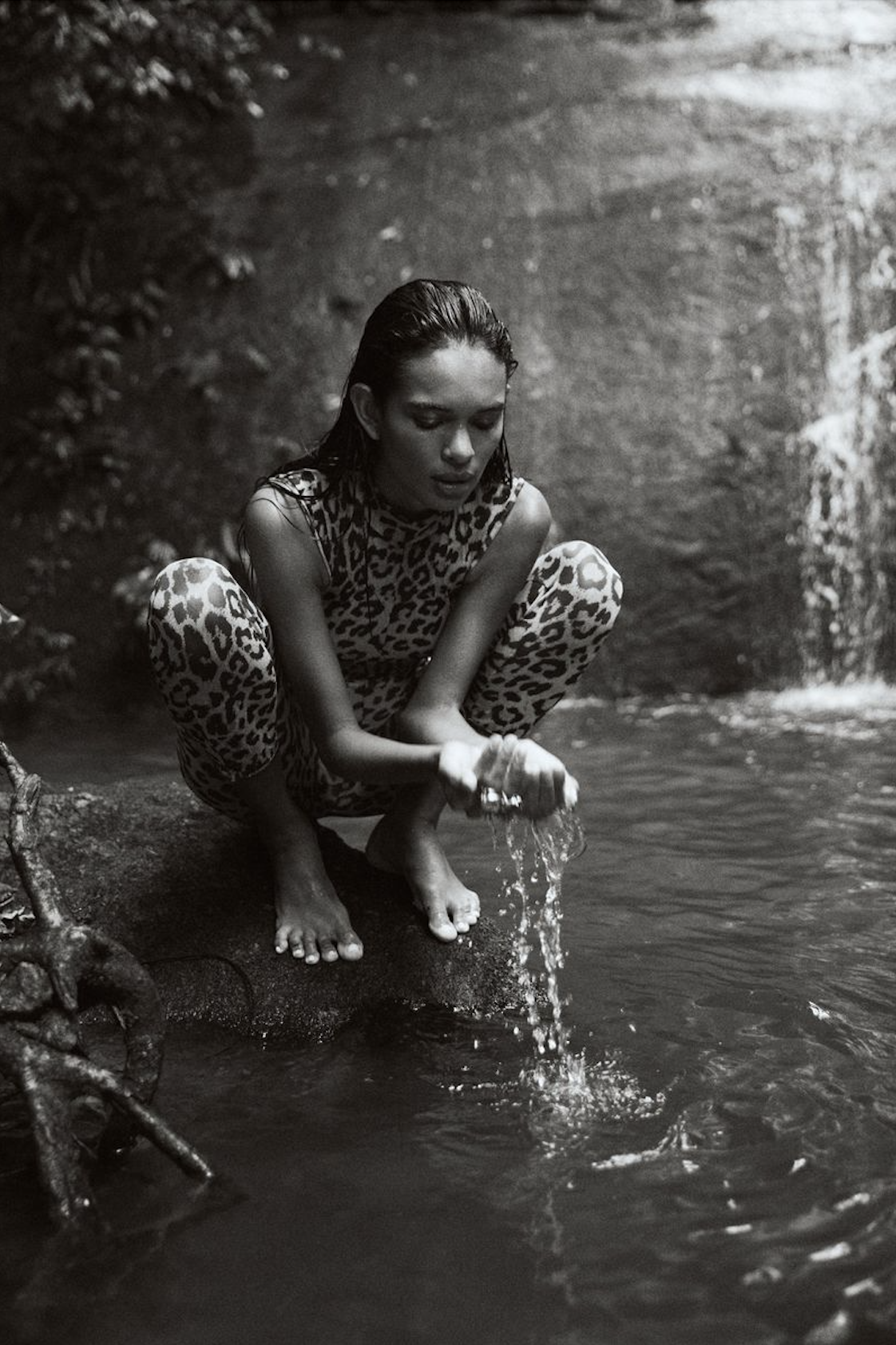Imaan Hammam for Zara Swimwear | Even Stone Age Humans Loved Swimming
/Top model Imaan Hammam fronts the late February 2024 release of Zara Swimwear. The images styled by Emmanuelle Alt remind us that spring is coming in to the northern hemisphere.
The Internet and AOC both are full of articles about the health benefits of swimming. Today we note that humans have been swimming for tens of thousands of years.
Swimming Since the Stone Age
The earliest evidence of humans swimming dates back to the Stone Age, with depictions found in cave paintings and rock art in various parts of the world.
The Stone Age began officially in academia at about 30,000 BC and continued until 3,000 BC, but new stone tools discoveries are pushing back the date much earlier.
Some of the earliest examples of ancient swimmers include the frescoes in the Cave of Swimmers in Egypt, dating back to around 10,000 years ago. Ancient artifacts such as wooden paddles, inflated animal skins, and petroglyphs have been discovered in different regions, indicating that our ancestors were familiar with aquatic activities.
These paintings in Egypt’s Al Wahat Al Dakhla Desert depict figures swimming in a naturalistic style, suggesting that swimming was already a part of human culture at that time.
Imaan Hammam Channels Ancestral Swimming Memories in Egypt
These archaeological and anthropological investigations of humans swimming make Imaan Hammam — whose Egyptian father is originally from Cairo and her Moroccan mother from Zagora — a perfect model to remind us of the ancient world’s relationship with swimming for exercise, wellness and feeling joyful.
Additionally, water holds immense symbolic significance in various global religions due to its powerful and transformative nature. In many belief systems, water is seen as a source of life and purification.
Swimming in the World’s Religions
In Christianity, water plays a central role in rituals such as baptism, symbolizing spiritual purification, rebirth, and the washing away of sins. It is viewed as a medium through which believers are cleansed and enter into a new life of faith.
In Hinduism, water is revered as a sacred element in rituals and ceremonies. Rivers like the Ganges are considered holy, and bathing in these waters is believed to cleanse one of impurities and grant spiritual blessings.
In Islam, the act of ablution (wudu) involves washing the hands, face, arms, and feet with water before prayer. This ritual purification symbolizes the cleansing of the body and soul, preparing worshippers to stand before Allah in a state of purity.
Buddhism views water as a symbol of clarity, calmness, and wisdom. The act of pouring water during ceremonies represents the act of letting go and releasing attachments, allowing for a fresh start and a clearer mind.
In indigenous religions around the world, water is often considered a sacred force that connects all living beings. It is seen as a giver of life, a healer, and a symbol of unity and harmony with the natural world.
Overall, the symbolism of water in global religions reflects its universal importance as a symbol of purity, renewal, and spirituality, connecting believers to the divine and the natural world in profound ways.
Water in Jungian Theory
In Jungian theory, water holds significant symbolic importance, representing the subconscious mind, emotions, and the feminine aspect of the psyche.
Water is often associated with the concept of the collective unconscious, a deep reservoir of shared human experiences and archetypes that shape our behavior and perceptions.
An obvious next question is whether any world religions embrace the concept of the collective unconscious. The answer is ‘yes’ and this is the subject of another post.









































